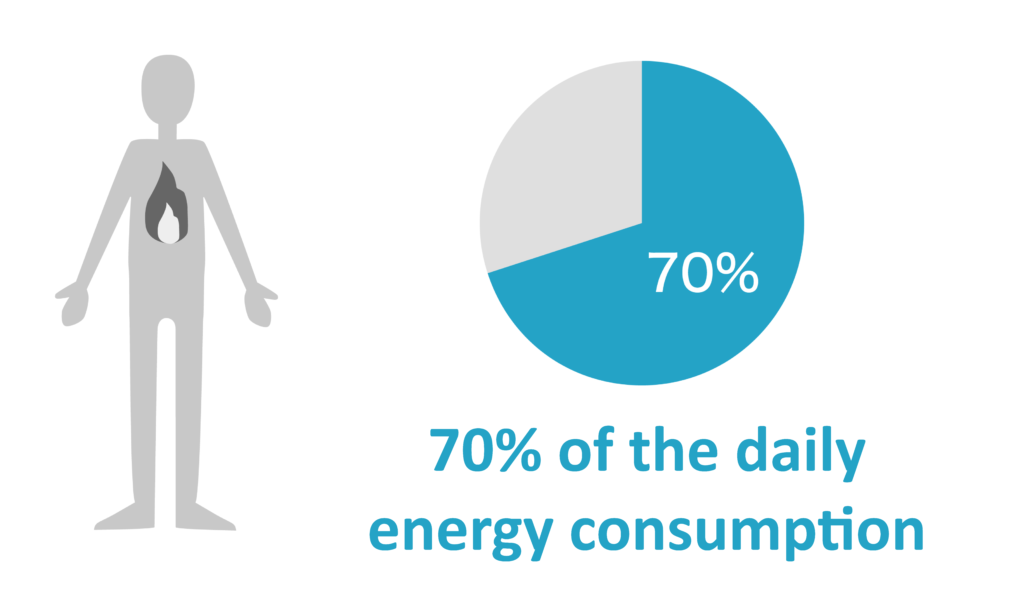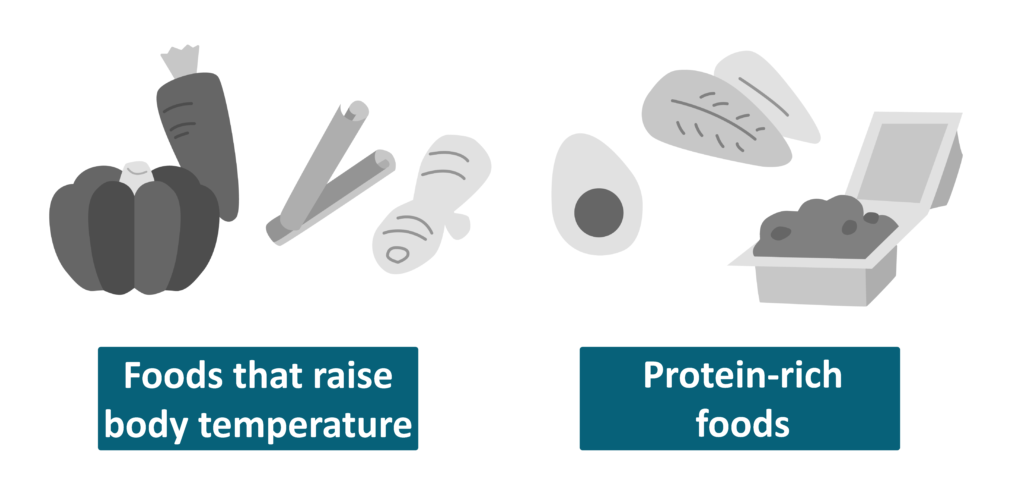
A body composition scale is an advanced version of a scale that can measure body weight, body fat percentage, and body age. Have you ever been disappointed to see that your body age is higher than your actual age one of these scales? In this article, we would like to introduce a way to keep your body age young, and NMN, a substance that is attracting attention precisely for its role in keeping body age young.
What is body age?
Body composition scales display a variety of indicators. Many of you may be wondering which ones indicate body age. Actually, this is calculated based on each company’s own research about how certain parameters change with age: “body fat percentage,” “subcutaneous fat percentage,” “visceral fat percentage,” “body water percentage,” “basal metabolic rate,” “muscle mass,” “estimated bone mass”, etc.
Body age is an indicative measure that is best used for health management. In general, if a person has low fat and a high basal metabolic rate, his or her body age is young; conversely, if a person has high fat and a low basal metabolic rate, his or her body age is older.
Know your average basal metabolic rate.
Did you know that there is actually a close relationship between keeping your body age young and your basal metabolic rate? As the first step toward keeping your body age young, let us first deepen our understanding of basal metabolic rate.
What is basal metabolic rate?

Even when your body is at rest, it consumes energy to keep your heart beating, maintaining your body temperature and breathing (in other words, to keep you alive.) The energy used for vital activities when we are not doing anything is called basal metabolic rate.
A high basal metabolic rate makes it difficult to gain weight, while a low basal metabolic rate makes it easier to gain weight, but in any case this rate declines with age.
Basal Metabolic Reference Values established by the Ministry of Health, Labor and Welfare in Japan
The basal metabolic rate established by the Ministry of Health, Labour and Welfare (MHLW) is useful for determining the approximate amount of calories you consume on a daily basis. “Basal metabolic rate (kcal/day) = basal metabolic reference value (kcal/body weight in kg/day) x reference body weight (kg)” is the formula used to calculate the basal metabolic rate.
The Ministry of Health and Welfare uses BMI as a standard for calculating energy intake and consumption for maintaining health and preventing lifestyle-related diseases, but it is necessary to reexamine the appropriate BMI value by factoring in increased physical activity and other factors.
Four main ways to increase basal metabolism
Here we will introduce the causes of low basal metabolism and four things you can do to raise your basal metabolism. These are things that you should definitely take into consideration in order to increase your basal metabolism and rejuvenate your internal age.
Why does basal metabolism decline?
Basal metabolism peaks in both men and women in their early to mid-teens and declines afterwards. The main cause of the decline in basal metabolism with age is thought to be a decrease in LBM (lean body mass), which is the total weight of muscles, organs, blood, bones, etc., minus fat tissue.
Muscles, in particular, are one of the body parts that consume more energy. In addition, they also play a role in maintaining body temperature by consuming energy. Therefore, a loss of muscle mass can lead to a decrease in body temperature.
Normally, a drop in body temperature of 1 degree Celsius is associated with a 13% drop in energy consumption. This would indicate that a drop in body temperature also causes a significant drop in basal metabolism.
In addition, a combination of factors, such as decreased energy consumption due to decreased organ activity and cellular aging, are thought to contribute to the decline in basal metabolism with age.
Method 1: eat a diet that is expected to improve your basal metabolism

We will now look at four things you can do to improve your basal metabolism. The first is to review your diet. It goes without saying that we need to build muscle in order to increase energy consumption. To build muscle, it is essential to actively consume proteins, which is the basic ingredient of muscle fibers.
Another point to be aware of is to increase dietary-induced thermogenesis (the conversion of dietary nutrients into heat), which is the process of consuming energy even when the body is at rest. Diet-induced thermogenesis happens when your body warms up after a meal.
Diet-induced thermogenesis is said to be enhanced by chewing food well, so it is more effective to eat slowly and savor the food instead of eating too quickly.
It is a known fact that the energy consumed by diet-induced thermogenesis is higher on a high-protein diet than on a high-carbohydrate or high-lipid diet. High-protein diets also help to increase energy consumption for diet-induced thermogenesis.
Method 2: drink water
The second thing we must do is drinking water. Water is a substance that is necessary for blood circulation, waste elimination, and body temperature regulation.
Although there is no clear evidence that drinking water raises basal metabolism, it is believed to have indirect effects. For example, drinking water improves blood circulation, improves poor circulation, and maintains body temperature.
Therefore, please remember to drink water. The best time to drink water is in the morning, when the body temperature tends to drop. If you drink room temperature or warm water in the morning, your stomach and intestines will warm up, and then your whole body will start to warm up slowly. This will also help you start the day in a good mood.
Method 3: muscle training
The third thing to do is strength training. Strength training literally means training your muscles. We have already mentioned in the previous section that muscles are energy-consuming tissues. Increasing muscle mass through strength training can directly increase your basal metabolism.
It is said that for every kilogram of muscle you gain, your basal metabolism increases by several dozen calories. When you think about it on a daily basis, it is a very small amount, but on a yearly basis, it makes a big difference. In the long run, the daily growth of muscle mass is essential to increase your basal metabolism.
It is a good idea to start with a level that you can enjoy, even if it is only for a short period of time, such as doing 1 to 3 sets of 10 to 15 repetitions of muscle training per day. In addition, it is also effective to try to use your muscles in your daily life as much as possible. For example, taking the stairs instead of using the escalator, or standing on the train instead of sitting while you commute to work.
Reference: “Three Reasons to Recommend Muscle Training – Diet,” by Natsuki Abe.
Method 4: stretching
The fourth and final thing is stretching. Stretching is effective in improving blood circulation and activating metabolism. In particular, stretching the lower body, which acts as a pump to promote blood flow, can be an added bonus to boost your metabolism.
Even gentle stretching can help to loosen stiffness in the body and improve movement. If you continue to stretch, your body will start to move more and more, and you will naturally increase the amount of exercise you do. If you think muscle training is too hard for you, why don’t you try stretching? From stretching you can also expect to increase your metabolism, since you increase your physical activity.
NMN is being studied to keep the body’s age young
In recent years, a new substance called NMN (nicotinamide mononucleotide) has been attracting attention for its potential to rejuvenate the body’s internal age.
An experiment at Harvard Medical School showed that mice that were in their 60s (as equivalent in human years) were rejuvenated after a 1-week administration of NMN, so they got the muscle mass of mice in their 20s (as equivalent in human years). Further research should determine how it affects the brain and skin.
Body age is a very important value to know the condition of your body. Basal metabolism, which is essential for a young body age, declines with age, but it can be raised with some effort. So, let’s try to rejuvenate our body age and improve our looks!
